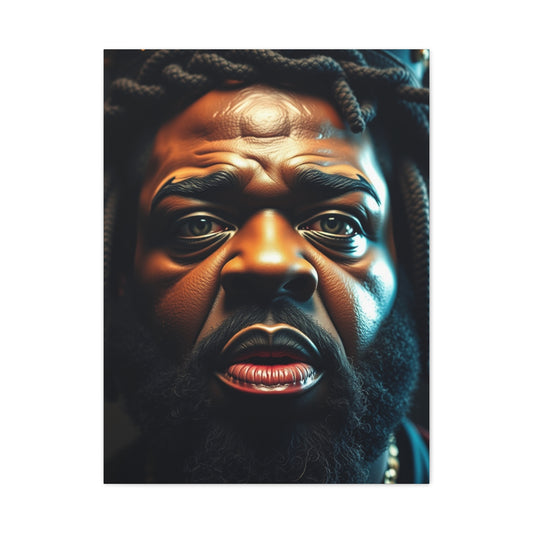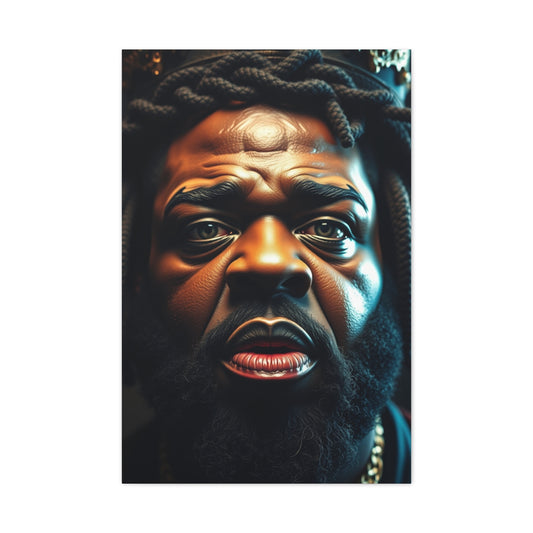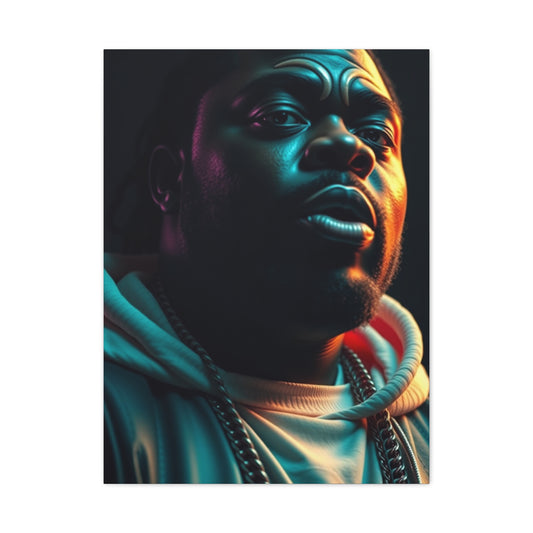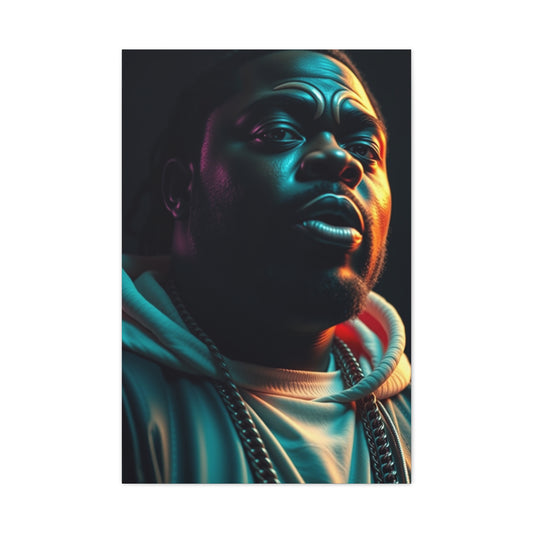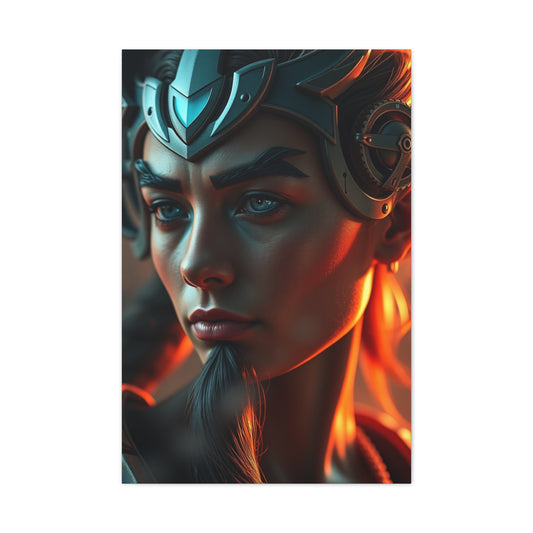The Timeless Charm of Drawing with Dip Pens
Drawing with dip pens offers a unique, almost magical experience that few modern tools can replicate. The process of dipping a nib into ink and applying it to paper connects the artist to their medium in a way that is deeply intimate and personal. At first glance, this method may seem outdated, especially in a world dominated by fast-paced digital tools and fountain pens with automatic ink flow. However, the charm of using dip pens lies in their ability to foster an artistic relationship built on precision, tactile engagement, and a level of skill that can elevate one's creativity to new heights.
Unlike fountain pens, which are equipped with ink reservoirs that provide a consistent and smooth flow, dip pens require a direct interaction with the ink. The artist must frequently dip the nib back into the ink to maintain the flow, allowing for a rhythm that is part of the drawing experience. While this can be seen as a challenge, it is precisely this hands-on element that offers greater freedom. Every dip, every stroke, feels like a deliberate act opportunity to shape the composition and texture of the drawing in ways that are unachievable with more modern tools.
This method of mark-making also invites an element of unpredictability, making each drawing a unique expression of the artist’s interaction with the medium. Unlike the perfect flow of a modern pen, the dip pen creates a dance between control and spontaneity. The artist must stay attuned to the behavior of the ink, learning when to dip and how to make the most of the ink's rich, varying flows. This creates an intimate connection between the artist and their work, turning each moment of creation into an act of discovery.
Mastering the Art of Pen and Ink: A Study in Precision and Expression
One of the most renowned artists to embrace the dip pen was Rembrandt, who utilized it to craft some of his most striking sketches. His skillful use of line and texture with a dip pen remains a testament to its potential for achieving both precision and emotional depth in artwork. Take, for example, his well-known sketch of a thatched cottage. The simplicity of vertical lines for tree trunks and diagonal hatching for the leaves creates a piece rich in texture, depth, and movement. This mastery of line quality is a hallmark of great pen and ink drawings, where seemingly simple strokes can evoke a world of emotion and detail.
The beauty of drawing with a dip pen lies in its versatility. Whether the artist is creating delicate, flowing lines that suggest a sense of calm, like the movement of water, or quick, energetic strokes that convey agitation or excitement, the dip pen can adapt to any artistic need. This level of flexibility allows for a wide range of expressive possibilities. The ability to create thin, precise lines for intricate detail, or to lay down bold, thick strokes for dramatic effect, makes the dip pen a tool of unparalleled versatility. This flexibility ensures that the pen can be used for everything from detailed observational drawings to more freeform, expressive sketches.
Artists can also harness the dip pen’s potential to convey texture in fascinating ways. The nature of the ink's flow, thickness, and interaction with the paper creates a range of effects that can mimic everything from the softest shadows to the harshest contrasts. This dynamic range is one of the key advantages of using dip pens, allowing artists to experiment with different techniques and find their unique voice through their linework.
While it offers unparalleled flexibility, drawing with dip pens also brings certain challenges. One of the most notable obstacles is the tendency for the ink to run dry during longer strokes. This requires the artist to constantly be mindful of their ink supply, making sure to dip the nib as necessary. While this can be frustrating, especially when working on detailed or intricate pieces, it also forces the artist to engage with their medium more deliberately. There is something undeniably rewarding about mastering the flow of ink, about understanding the precise moment when the pen needs to be dipped again, and how that rhythmic dance of movement impacts the work in progress.
Overcoming Challenges and Embracing the Dip Pen's Unique Rewards
Learning to use a dip pen effectively requires patience and perseverance, but the results are worth the effort. When beginners first approach dip pens, they may feel a sense of frustration as they struggle with inconsistent ink flow or the occasional smudge on the paper. These imperfections, however, are not flaws but rather part of the process of mastering this art form. The dip pen challenges the artist to slow down, observe, and practice control. Through repeated use, the artist learns to anticipate when a dip is needed, how to adjust the pressure of the nib, and how to create lines that are both graceful and powerful.
For beginners, persistence is key. As with any art form, the more an artist practices with a dip pen, the more intuitive the process becomes. Over time, the once-difficult task of managing ink flow becomes second nature, and the artist’s connection to the drawing process deepens. The beauty of the dip pen is that it rewards dedication. As the artist learns to manage the ink’s flow and the rhythm of the strokes, their work begins to show greater confidence and control. The imperfections and unpredictability that initially seemed like obstacles evolve into elements that enhance the character of the work, giving each piece a unique quality that cannot be replicated by modern tools.
The dip pen allows for an exploration of line quality and texture that few other tools can match. The artist learns to master delicate lines that whisper across the page, as well as bold strokes that demand attention. The varied textureswhether smooth and polished or rough and texturedserve to elevate the emotional impact of the drawing, allowing the artist to convey a wide range of moods and expressions. This combination of technical skill and artistic intuition is what makes the dip pen such a powerful tool in an artist’s toolkit.
For artists who are open to embracing the challenges of using dip pens, the reward is immense. Not only does it provide a direct, tactile connection to the medium, but it also opens up new creative possibilities. With practice, the dip pen becomes more than just a toolit becomes an extension of the artist’s vision, enabling them to express their ideas in ways that are rich with texture, depth, and emotion. The result is a body of work that feels personal, authentic, and full of life, much like the mark of the artist.
Getting Started with Dip Pens: The Essentials You Need
Embarking on the journey of dip pen drawing doesn’t require an extravagant investment or extensive equipment. For beginners, it’s a surprisingly affordable and rewarding experience that opens up new artistic possibilities. With a modest investment, you can begin exploring the world of dip pens, which allow you to create intricate and personal works of art, all while enjoying a unique drawing texture and depth that other mediums might not offer.
At the core of your dip pen adventure are a few essential items that serve as the foundation of your creative process. To get started, you’ll need to gather a selection of nibs, a compatible pen handle, and ink. These key components are relatively simple to obtain and don’t require a significant financial commitment. Additionally, the choice of paper plays a pivotal role in your dip pen experience. It may not be immediately obvious, but the texture and smoothness of your paper can dramatically influence your line quality and overall drawing performance. Without the right surface, your dip pen may not glide as effortlessly, and you may face issues such as ink splattering or uneven strokes.
Selecting the Right Nibs: Exploring Different Styles and Effects
When you first dive into the world of dip pens, one of the most important decisions you will make is selecting the right nib. There is an impressive variety of nibs available, each tailored to different drawing styles and line qualities. Some nibs are engineered for delicate, fine lines, ideal for detailed sketches, while others are designed to deliver bolder, more expressive strokes.
The nib you choose directly impacts your artistic expression, so it's essential to experiment with different types to discover which one best aligns with your drawing preferences. For instance, flexible nibs are known for their ability to vary the line width depending on the pressure you apply. This versatility can produce dynamic and lively lines, making them ideal for expressive or fluid sketches. On the other hand, stiffer nibs provide a consistent, uniform line width, perfect for more controlled and precise drawings.
Understanding the range of textures that different nibs can create is crucial to mastering the medium. Some nibs may take a little time to get used to, but they can offer exceptional results once you gain more control over them. For beginners, starting with a basic nib designed for fine lines might be easier to handle, but over time, you may want to explore those that allow for greater variation in line thickness to enhance the texture and richness of your work.
The Importance of Pen Handles and Ink Selection
The pen handle is another key element in your dip pen setup. While it might seem secondary to the nib itself, the handle plays a critical role in providing the comfort and control you need for precise lines and smooth strokes. A good pen handle should feel natural in your hand and fit securely with the nibs you plan to use. There are many different types of pen handles available, typically made of wood or metal, and each offers a different weight and grip.
The handle you choose should allow for an ergonomic grip to avoid strain during longer drawing sessions. Since the act of drawing can require delicate and sustained movements, choosing a handle that feels comfortable and stable in your hand can significantly improve the quality of your work and make the entire process more enjoyable. The handle should be long enough to provide balance, yet not too heavy, so you can maintain fine control over the nib.
When it comes to ink, the options are vast. The ink you use will affect the line quality, drying time, and overall aesthetic of your drawing. There are thick inks that dry slowly, allowing for rich, dark lines, while others are more fluid and dry quickly, perfect for light strokes or fast, dynamic drawings. It’s important to choose ink specifically designed for dip pens. Using regular fountain pen ink is not recommended, as it can clog your nibs and cause inconsistent ink flow, leading to frustrating drawing experiences.
For those who are just starting, it’s worth experimenting with different ink types to find the one that best suits your style. Some inks are formulated to be more resistant to smudging, while others produce a more vibrant finish. For smooth and consistent results, you’ll want to choose an ink that flows well but also dries at an appropriate rate for your drawing speed and desired effect. The ink you select will ultimately contribute to the texture and overall feel of your artwork, so don’t hesitate to try a few different varieties.
Choosing the Right Paper for Dip Pen Drawing
When it comes to paper selection, your choice will significantly affect the outcome of your drawing. The texture and finish of the paper are just as important as the nibs and ink you use. For a smooth and uninterrupted drawing experience, you’ll want to select paper that allows the ink to flow freely without causing smudging or uneven strokes. Ideally, smooth or vellum-finish papers are preferred for dip pen work. These papers provide an even surface, allowing the nib to glide across the page with ease, creating clean, precise lines.
Many professional artists recommend smooth, high-quality papers like Bristol board for dip pen drawing. These papers are specifically designed to handle various media, including ink, and offer the right balance between smoothness and absorbency. If you’re just starting, brands like Strathmore offer excellent options such as the 300 and 400 Series Smooth Bristol pads. These papers are known for their durability and their ability to handle detailed ink work, providing you with a stable and reliable surface on which to practice and experiment.
Low-quality or heavily textured paper, on the other hand, can be more challenging to work with. These papers can cause the nib to catch on fibers, disrupting the ink flow and potentially leading to unsightly splatters or uneven lines. To ensure a smoother experience, it’s best to invest in high-quality paper designed for dip pens. As you become more experienced, you may also experiment with different paper textures to achieve various artistic effects, but starting with a good foundation will help you get the best results as you hone your skills.
The Joy of Experimentation: Developing Your Technique
Once you have all the essential tools, nibs, a suitable handle, ink, and quality paper, he next step is to dive into the creative process. While it may take some time to develop your skills and get comfortable with the medium, the beauty of dip pen drawing is that it encourages experimentation. You’ll likely start with simple strokes and practice, but as you gain experience, you’ll develop a better understanding of line quality, texture, and how to compose your artwork effectively.
It’s natural to feel challenged at first, especially with the learning curve that comes with mastering the pressure required for flexible nibs or controlling ink flow. However, as you practice, you’ll notice significant improvements in your technique. You'll begin to understand how pressure affects the thickness of the lines, how different nibs produce various textures, and how your ink choice can alter the final look of your drawing.
This process of trial and error is an integral part of developing your artistic style. As you gain confidence in handling the dip pen, you'll begin to appreciate the way each stroke feels, and you may even start to see how this tool can bring out new dimensions in your artwork. The delicate, organic nature of dip pen work creates intricate lines and textures that are hard to replicate with other drawing instruments, making it a rewarding experience for those willing to put in the time and effort.
In actuality, dip pen drawing isn’t just about the tools you use, it’s about the experience of discovery and growth as an artist. The simplicity of the medium, combined with the versatility and the tactile satisfaction of working with ink, allows for endless creative possibilities. Whether you're sketching, outlining, or creating detailed illustrations, dip pens offer a unique avenue for self-expression and artistic exploration. As you continue to practice and refine your technique, you’ll unlock the true potential of this traditional medium and join a long legacy of artists who have created masterpieces with nothing more than a nib, ink, and paper.
Mastering Line Control: From Subtlety to Boldness
One of the most fundamental skills you’ll need to develop as you become proficient with the dip pen is the ability to control line thickness. This ability to vary line weight allows you to give depth, dimension, and texture to your drawings, providing a sense of realism and emotional impact. The key to achieving this lies in understanding the balance between light and heavy pressure applied to the nib. By experimenting with this pressure, you can create lines that range from thin and precise to thick and bold.
Applying light pressure on the nib results in fine, detailed lines, ideal for adding intricate elements like veins on a leaf, the subtle texture of fabric, or the delicate curve of a bird’s feather. On the other hand, applying more pressure on the pen allows for broader, darker strokes. This technique is particularly useful for areas that require more visual weight, such as shadowed sections or elements that need to stand out. Varying the thickness of your lines with purpose also helps to create contrast and dynamic interest in your drawings, leading to a richer, more engaging composition.
The power of line variation doesn’t just lie in creating contrasts but is also essential for conveying emotions and creating movement. In some cases, you may want to use delicate, thin lines to capture a soft, serene atmosphere, while in others, bold, thick lines might reflect strength or intensity. The ability to adjust the line thickness according to the mood of your artwork enables you to imbue your drawings with a deeper narrative. Mastering this dynamic is an ongoing process, but through continued practice, you will develop a natural rhythm for deciding when to go light or heavy with your strokes.
Exploring Textures: The Role of Nibs and Techniques
In addition to controlling line thickness, the next step in advancing your dip pen technique is to experiment with different nibs. The choice of nib dramatically affects the texture and flow of your drawing. Some nibs, such as the delicate crow quill, are designed for producing fine, precise lines, making them ideal for detailed drawings like portraits or still life sketches. These nibs offer a higher degree of control, allowing artists to capture even the smallest details with remarkable accuracy.
Other nibs, especially those used for calligraphy, have broader tips and are designed to create more expressive strokes. These nibs are perfect for creating sweeping, bold lines that contribute to a sense of energy or movement within your artwork. For example, a broader nib might be used to capture the flowing lines of water, the folds of fabric in motion, or the rough textures of natural landscapes. The choice of nib is crucial to how the finished drawing will feel nib brings its personality to the artwork.
As you become more comfortable with the different nibs and their specific qualities, you’ll also learn to switch between them depending on the needs of your drawing. Sometimes, a fine nib will be perfect for the detailed rendering of intricate objects, while other times, a broader nib will allow you to create dramatic contrasts and dynamic movement. The interplay between various nibs adds another layer of complexity and creativity to your drawings, enabling you to enhance both the texture and emotional impact of your work.
The Art of Shading: Cross-Hatching and Layering
Shading is one of the most captivating aspects of dip pen drawing, offering a range of possibilities for depth and tonal contrast. Cross-hatching is a time-honored technique that allows you to create rich shadows and textures through layers of intersecting lines. This technique involves drawing parallel lines in one direction, followed by additional lines in a perpendicular direction, resulting in a textured effect. The density and direction of your hatching marks will influence the darkness or lightness of the shaded areas, creating the illusion of volume and depth.
Mastering cross-hatching involves not only understanding how to build up layers of lines but also developing a sense of rhythm and control in your drawing. The process of layering lines to achieve varied tonal effects requires patience and practice. Initially, you may find it challenging to get the perfect balance between light and dark areas, but with time, you’ll discover how to layer the lines in a way that gives your drawings both subtle gradients and striking contrasts.
What makes cross-hatching particularly effective is its versatility. By adjusting the density, thickness, and direction of your hatching lines, you can produce a range of tonal effects, from soft, gradual transitions to bold, stark contrasts. For instance, when working with softer textures like skin or fabric, you may want to apply lighter, more delicate hatching, while for rough surfaces or dramatic shadows, you may prefer denser, more pronounced lines. The beauty of this technique lies in its adaptability, allowing artists to experiment and find their unique approach to shading.
In addition to cross-hatching, there are other techniques you can incorporate into your dip pen practice to enhance your shading. Stippling, for instance, involves creating areas of tone by making tiny ink dots instead of lines, adding another level of texture and detail. Combining various techniques such as stippling and hatching can create incredibly rich, dynamic effects that give your drawings a sense of realism and depth. As with all aspects of dip pen drawing, developing your shading technique takes time and experimentation, but once you’ve refined it, you’ll be able to produce truly captivating results.
Embracing the Imperfections: The Uniqueness of the Dip Pen
One of the most endearing qualities of dip pen drawing is the opportunity to embrace the imperfections inherent in the medium. Unlike modern pens, which often provide a consistent and predictable flow of ink, the dip pen introduces a level of unpredictability that many artists find compelling. The slight variations in ink flow, the subtle inconsistencies in line thickness, and the occasional blot or smudge are not flaws to be corrected, but rather, they contribute to the charm and character of the artwork.
These imperfections give dip pen drawings their distinctive, organic quality. The irregularities in the ink flow can lend a sense of spontaneity to the drawing, capturing the moment of creation in a way that feels more immediate and alive. Whether it's the slightly uneven curve of a line or a subtle ink blot that adds a touch of drama, these elements bring a raw energy to the artwork that would be hard to achieve with more precise tools.
As you gain more experience with the dip pen, you’ll begin to appreciate these imperfections for the unique beauty they bring to your work. Rather than striving for absolute perfection, you’ll start to focus on the expressive potential of the medium, using the natural flow of the ink and the fluctuations in line thickness to your advantage. These subtle variations can help convey movement, texture, and atmosphere, making your drawings feel more dynamic and full of life.
Practice Makes Perfect: Becoming Fluent in the Language of the Dip Pen
Above all, the key to mastering the dip pen lies in practice. The more you draw, the more familiar you will become with the flow of the ink and the feel of the nib on the page. You’ll begin to develop an instinctive understanding of how to control the pressure, vary the line thickness, and manipulate the nib to create the textures and effects you desire. Over time, these techniques will become second nature, and the dip pen will feel like an extension of your hand, guiding you effortlessly through your artistic process.
Through consistent practice, you’ll not only develop a deeper understanding of the dip pen but also cultivate a personal style that reflects your unique artistic voice. The imperfections in your drawings will no longer seem like mistakes, but rather elements that add depth and personality to your work. As you continue to refine your technique and embrace the unpredictability of the dip pen, you'll unlock its full creative potential and find new ways to express yourself on the page. Ultimately, the dip pen will become an indispensable tool in your artistic toolkit, allowing you to create drawings that are rich in texture, movement, and emotion.
Refining Your Technique and Embracing New Approaches
As you immerse yourself further in the world of dip pens, you’ll find yourself transitioning from a beginner to a more seasoned artist, developing a refined technique and exploring new ways to express your creativity. At this stage, the possibilities for artistic expression seem endless, and the unique versatility of dip pens makes them an ideal tool for communicating emotions, ideas, and stories through your artwork. Whether you're creating intricate portraits, dramatic landscapes, dynamic still lifes, or even abstract forms, dip pens provide an extraordinary level of control that allows you to push the boundaries of your art.
To advance your practice, you must focus on expanding your technical skills. Begin by experimenting with the basic elements of your drawings, such as line quality, texture, and pressure. By understanding how the nib's pressure can impact the width, flow, and character of the line, you'll gain greater command over your work. A key element in refining your technique is learning to control subtle shifts in pressure, which can change the way your lines appear thicker, thinner, sharper, or softer, all depending on how you hold and move the pen. This attention to detail can dramatically enhance the depth and complexity of your drawings, enabling you to express a wider range of emotions or highlight intricate textures that evoke realism or stylization.
Equally important is your exploration of different ink types. The consistency and quality of the ink you use can significantly affect your mark-making, influencing the mood and atmosphere of your piece. For example, thicker, more viscous ink will produce darker, more defined lines, while thinner ink can create softer, more delicate strokes. Experimenting with a variety of inks, from highly pigmented to water-based varieties, will give you new opportunities to manipulate tone and shading in ways that you hadn't considered before. The color of the ink itself also offers a new dimension to your work. Inks come in an array of shades, from jet black to rich sepia and even vibrant hues, allowing you to tailor the mood of your drawing to match the emotions you wish to convey.
To fully develop your skills and enhance your drawings, it's also important to experiment with different types of paper. The texture and weight of the paper can have a profound impact on the feel of your marks. A rough, textured paper may absorb ink more quickly, creating a distinct, grainy effect, while a smooth, high-quality drawing paper can allow for precise, clean lines with minimal ink absorption. By exploring how different surfaces respond to your dip pen, you’ll discover which materials best complement your style, adding yet another layer to your creative toolbox.
Expanding Your Artistic Repertoire
As you begin to refine your dip pen technique, you’ll also want to experiment with new ways of incorporating shading, texture, and depth into your work. Traditional drawing techniques such as cross-hatching, stippling, or scumbling can all be applied effectively with dip pens to create a variety of tonal effects. Cross-hatching, in particular, is a great technique to master, as it can add volume, form, and subtle gradients to your work. By building up layers of lines in different directions, you create a sense of dimension and light, which can bring even the simplest drawings to life. This method allows for precise control over shadow and highlight, giving you the ability to create realistic depth in your drawings.
Another approach to expanding your artistic repertoire is to experiment with more gestural and expressive strokes. While the dip pen is often associated with precision and detail, it can also be used to create sweeping, fluid lines that add dynamism and movement to your work. These sweeping, gestural strokes can capture the energy and emotion of a subject, allowing you to communicate feelings of excitement, tension, or serenity. The key here is to embrace spontaneity and flow, letting the pen move across the page without overthinking every mark. This can help you create more organic, lively compositions that reveal a sense of freedom and exploration.
Additionally, as you experiment with different drawing subjects, you'll find new ways to incorporate your growing technical skills into diverse forms of art. Landscape drawings, for example, can benefit from the detailed line work of a dip pen to capture the intricacies of nature, such as the texture of trees, foliage, or rock formations. Portraits, on the other hand, allow you to focus on the subtleties of facial features and expressions, using the precision of the pen to bring out character and mood. The dip pen can also be used in more abstract forms, where the focus shifts from representational accuracy to exploring the relationships between shapes, lines, and textures in more free-flowing compositions. The diversity in subject matter offers an exciting opportunity to apply your evolving dip pen skills in many different contexts, further expanding your range as an artist.
As you continue to grow as an artist, it’s also important to remain open to learning from others. Whether through observing the work of other artists or seeking feedback from fellow creatives, exposure to different perspectives and techniques can help you refine your approach. Studying the work of accomplished artists who use dip pens, or even those who specialize in related mediums like ink and brush, can provide valuable insight into how to manipulate the medium to achieve various effects. The beauty of using dip pens lies in their versatility, and as you experiment with different techniques, you’ll find that your unique style begins to emerge, shaped by your personal interests, experiences, and artistic vision.
Cultivating Your Unique Artistic Voice
One of the most rewarding aspects of advancing your dip pen practice is discovering and cultivating your distinctive artistic voice. As you experiment with different techniques, tools, and surfaces, you'll begin to recognize patterns in your work that reflect your personal preferences, aesthetic sensibilities, and creative instincts. Over time, your style will evolve, becoming more refined and unique to you, with every drawing helping you to understand your artistic preferences and tendencies better.
Your style is not just a result of the techniques you use; it’s also an expression of who you are as an artist. As you continue to refine your skills, you’ll start to notice recurring themes in your work, whether it’s a particular way you approach texture, a consistent use of certain lines or shapes, or a distinct approach to storytelling. Your style will naturally evolve as you delve deeper into different subjects and experiment with various ink types and tools. In this process, you may even start to fuse elements from other media, creating a hybrid style that blends the characteristics of ink with those of watercolor, graphite, or digital drawing.
While developing a personal style is important, it’s also essential to embrace experimentation. Even after discovering aspects of your style, allow yourself the freedom to step outside your comfort zone and explore new techniques or subjects that challenge you. Pushing your limits and venturing into unfamiliar territory can often lead to unexpected breakthroughs that further enrich your creative journey. The beauty of using dip pens lies in their adaptability and their potential to help you explore new dimensions of creativity, whether you are working with detailed illustrations or spontaneous, expressive strokes.
By consistently challenging yourself, remaining curious, and embracing new ideas, you’ll find that the dip pen becomes not just a tool for creating art but an essential part of your artistic identity. Whether you're creating meticulously detailed pieces or spontaneous, abstract forms, the dip pen offers a powerful means of expression, allowing you to communicate your ideas, emotions, and stories in ways that feel uniquely your own. The journey toward discovering your style may take time, but with each new drawing, you’ll refine your technique, explore new possibilities, and continue to grow as an artist.










